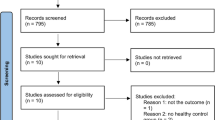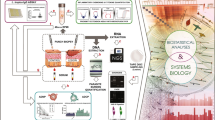Abstract
Mapping murine genes controlling cutaneous leishmaniasis (CL) identified Fli1 as a candidate influencing resistance to L. major and enhanced wound healing. We examine FLI1 as a gene controlling CL and mucosal leishmaniasis (ML) caused by L. braziliensis in humans. Intron 1 single nucleotide polymorphisms tagging promoter and enhancer elements were analysed in 168 nuclear families (250 CL; 87 ML cases) and replicated in 157 families (402 CL; 39 ML cases). Robust case-pseudocontrol logistic regression analysis showed association between allele C (odds ratio (OR) 1.65; 95% confidence interval 1.18–2.29; P=0.003) of FLI1_rs7930515 and CL in the primary sample that was confirmed (OR 1.60; 95% confidence interval 1.10–2.33; P=0.014) in the replication set (combined P=1.8 × 10−4). FLI1_rs7930515 is in linkage disequilibrium with the functional GAn microsatellite in the proximal promoter. Haplotype associations extended across the enhancer, which was not polymorphic. ML associated with inverse haplotypes compared with CL. Wound healing is therefore important in CL, providing potential for therapies modulating FLI1.
This is a preview of subscription content, access via your institution
Access options
Subscribe to this journal
Receive 6 digital issues and online access to articles
$119.00 per year
only $19.83 per issue
Buy this article
- Purchase on SpringerLink
- Instant access to full article PDF
Prices may be subject to local taxes which are calculated during checkout


Similar content being viewed by others
References
Blackwell JM, Fakiola M, Ibrahim ME, Jamieson SE, Jeronimo SB, Miller EN et al. Genetics and visceral leishmaniasis: of mice and man. Parasite Immunol 2009; 31: 254–266.
El-Safi S, Kheir MM, Bucheton B, Argiro L, Abel L, Dereure J et al. Genes and environment in susceptibility to visceral leishmaniasis. C R Biol 2006; 329: 863–870.
Sakthianandeswaren A, Foote SJ, Handman E . The role of host genetics in leishmaniasis. Trends Parasitol 2009; 25: 383–391.
Lipoldova M, Demant P . Genetic susceptibility to infectious disease: lessons from mouse models of leishmaniasis. Nat Rev Genet 2006; 7: 294–305.
Castes M, Trujillo D, Rojas ME, Fernandez CT, Araya L, Cabrera M et al. Serum levels of tumor necrosis factor in patients with American cutaneous leishmaniasis. Biol Res 1993; 26: 233–238.
Bacellar O, Lessa H, Schriefer A, Machado P, Ribeiro de Jesus A, Dutra WO et al. Up-regulation of Th1-type responses in mucosal leishmaniasis patients. Infect Immun 2002; 70: 6734–6740.
Cabrera M, Shaw M-A, Sharples C, Williams H, Castes M, Convit J et al. Polymorphism in TNF genes associated with mucocutaneous leishmaniasis. J Exp Med 1995; 182: 1259–1264.
Castellucci L, Jamieson SE, Miller EN, Menezes E, Oliveira J, Magalhaes A et al. CXCR1 and SLC11A1 polymorphisms affect susceptibility to cutaneous leishmaniasis in Brazil: a case-control and family-based study. BMC Med Genet 2010; 11: 10.
Castellucci L, Menezes E, Oliveira J, Magalhaes A, Guimaraes LH, Lessa M et al. IL6 -174 G/C promoter polymorphism influences susceptibility to mucosal but not localized cutaneous leishmaniasis in Brazil. J Infect Dis 2006; 194: 519–527.
Salhi A, Rodrigues Jr V, Santoro F, Dessein H, Romano A, Castellano LR et al. Immunological and genetic evidence for a crucial role of IL-10 in cutaneous lesions in humans infected with Leishmania braziliensis. J Immunol 2008; 180: 6139–6148.
Ramasawmy R, Menezes E, Magalhaes A, Oliveira J, Castellucci L, Almeida R et al. The -2518bp promoter polymorphism at CCL2/MCP1 influences susceptibility to mucosal but not localized cutaneous leishmaniasis in Brazil. Infect Genet Evol 2010; 10: 607–613.
Lessa HA, Machado P, Lima F, Cruz AA, Bacellar O, Guerreiro J et al. Successful treatment of refractory mucosal leishmaniasis with pentoxifylline plus antimony. Am J Trop Med Hyg 2001; 65: 87–89.
D’Oliveira Jr A, Machado P, Bacellar O, Cheng LH, Almeida RP, Carvalho EM . Evaluation of IFN-gamma and TNF-alpha as immunological markers of clinical outcome in cutaneous leishmaniasis. Rev Soc Bras Med Trop 2002; 35: 7–10.
Faria DR, Gollob KJ, Barbosa JJ, Schriefer A, Machado PR, Lessa H et al. Decreased in situ expression of interleukin-10 receptor is correlated with the exacerbated inflammatory and cytotoxic responses observed in mucosal leishmaniasis. Infect Immun 2005; 73: 7853–7859.
Beebe AM, Mauze S, Schork NJ, Coffman RL . Serial backcross mapping of multiple loci associated with resistance to Leishmania major in mice. Immunity 1997; 6: 551–557.
Mock B, Blackwell J, Hilgers J, Potter M, Nacy C . Genetic control of Leishmania major infection in congenic, recombinant inbred and F2 populations of mice. Eur J Immunogenet 1993; 20: 335–348.
Roberts M, Mock BA, Blackwell JM . Mapping of genes controlling Leishmania major infection in CXS recombinant inbred mice. Eur J Immunogenet 1993; 20: 349–362.
Havelkova H, Badalova J, Svobodova M, Vojtikova J, Kurey I, Vladimirov V et al. Genetics of susceptibility to leishmaniasis in mice: four novel loci and functional heterogeneity of gene effects. Genes Immun 2006; 7: 220–233.
Sakthianandeswaren A, Elso CM, Simpson K, Curtis JM, Kumar B, Speed TP et al. The wound repair response controls outcome to cutaneous leishmaniasis. Proc Natl Acad Sci USA 2005; 102: 15551–15556.
Sakthianandeswaren A, Curtis JM, Elso C, Kumar B, Baldwin TM, Lopaticki S et al. Fine mapping of Leishmania major susceptibility Locus lmr2 and evidence of a role for Fli1 in disease and wound healing. Infect Immun 2010; 78: 2734–2744.
Morris EE, Amria MY, Kistner-Griffin E, Svenson JL, Kamen DL, Gilkeson GS et al. A GA microsatellite in the Fli1 promoter modulates gene expression and is associated with systemic lupus erythematosus patients without nephritis. Arthritis Res Ther 2010; 12: R212.
Donaldson IJ, Chapman M, Kinston S, Landry JR, Knezevic K, Piltz S et al. Genome-wide identification of cis-regulatory sequences controlling blood and endothelial development. Hum Mol Genet 2005; 14: 595–601.
Sharrocks AD . The ETS-domain transcription factor family. Nat Rev Mol Cell Biol 2001; 2: 827–837.
Ko LJ, Engel JD . DNA-binding specificities of the GATA transcription factor family. Mol Cell Biol 1993; 13: 4011–4022.
Svenson JL, Chike-Harris K, Amria MY, Nowling TK . The mouse and human Fli1 genes are similarly regulated by Ets factors in T cells. Genes Immun 2010; 11: 161–172.
Boeva V, Surdez D, Guillon N, Tirode F, Fejes AP, Delattre O et al. De novo motif identification improves the accuracy of predicting transcription factor binding sites in ChIP-Seq data analysis. Nucleic Acids Res 2010; 38: e126.
Wang Y, Fan PS, Kahaleh B . Association between enhanced type I collagen expression and epigenetic repression of the FLI1 gene in scleroderma fibroblasts. Arthritis Rheum 2006; 54: 2271–2279.
Thaler R, Agsten M, Spitzer S, Paschalis EP, Karlic H, Klaushofer K et al. Homocysteine suppresses the expression of the collagen cross-linker lysyl oxidase involving IL-6, Fli1 and epigenetic DNA-methylation. J Biol Chem 2010; 286: 5578–5588.
Asano Y . Future treatments in systemic sclerosis. J Dermatol 2010; 37: 54–70.
Asano Y, Bujor AM, Trojanowska M . The impact of Fli1 deficiency on the pathogenesis of systemic sclerosis. J Dermatol Sci 2010; 59: 153–162.
Clayton D . A generalization of the transmission/disequilibrium test for uncertain-haplotype transmission. Am J Hum Genet 1999; 65: 1170–1177.
NCBI. Entrez SNP http://www.ncbinlmnihgov/sites/entrez 2010.
Knapp M . A note on power approximations for the transmission disequilibrium test. Am J Hum Genet 1999; 64: 1177–1185.
Marsden PD . Mucosal leishmaniasis (‘espundia’ Escomel, 1911). Trans R Soc Trop Med Hyg 1986; 80: 859–876.
O’Connell JR, Weeks DE . PedCheck: a program for identification of genotype incompatibilities in linkage analysis. Am J Hum Genet 1998; 63: 259–266.
Cordell HJ, Barratt BJ, Clayton DG . Case/pseudocontrol analysis in genetic association studies: A unified framework for detection of genotype and haplotype associations, gene-gene and gene-environment interactions, and parent-of-origin effects. Genet Epidemiol 2004; 26: 167–185.
Acknowledgements
We acknowledge the support of NIH Grant AI 30639 for the field work in Brazil, and The Wellcome Trust for supporting the laboratory work and statistical analyses carried out in the UK. LC was supported by NIH/FIC 1 D43 TW007127–01 for her period of stay in UK. JO and AM were also supported by NIH/FIC 1 D43 TW007127-01 in Brazil.
Authors contributions: LC carried out the field collection and preparation of the samples, performed the genotyping, and participated in the statistical analysis and interpretation of the data. SEJ and ENM trained LC in the laboratory for genotyping techniques, in database entry and use of the genetic database GenIE in Cambridge, and in genetic statistical analysis methods. SEJ cross-checked statistical analyses and carried out additional statistical tests. LFA, JO, AM and LHG participated in the field collection of data, processing of DNA samples and database entry in Brazil. ML is the doctor responsible for confirmation of the ML cases by performing ENT exams. EL participated in the field work by contacting patients and helping sample collection. ARJ trained the field group, initial selection of cases from the health post, assisted with field collection of data and participated in the design of the study. EMC helped conceive the study, initial selection of cases from the health post and provided the logistical support to make the study possible. JMB participated in the design of the study, conceived the specific hypothesis to be tested, made the final interpretation of the data and prepared the manuscript. All authors read and approved the final manuscript.
Author information
Authors and Affiliations
Corresponding author
Ethics declarations
Competing interests
The authors declare no conflict of interest.
Additional information
Supplementary Information accompanies the paper on Genes and Immunity website
Supplementary information
Rights and permissions
About this article
Cite this article
Castellucci, L., Jamieson, S., Miller, E. et al. FLI1 polymorphism affects susceptibility to cutaneous leishmaniasis in Brazil. Genes Immun 12, 589–594 (2011). https://doi.org/10.1038/gene.2011.37
Received:
Accepted:
Published:
Issue Date:
DOI: https://doi.org/10.1038/gene.2011.37
Keywords
This article is cited by
-
Human genetics of leishmania infections
Human Genetics (2020)
-
Genetic variant strains of Leishmania (Viannia) braziliensis exhibit distinct biological behaviors
Parasitology Research (2018)
-
Combined Strategies to Improve the Expression of Recombinant Sterol C24-Methyltransferase from Leishmania braziliensis in E. coli
Molecular Biotechnology (2018)
-
Seroconversion to Lutzomyia intermedia LinB-13 as a biomarker for developing cutaneous leishmaniasis
Scientific Reports (2017)



